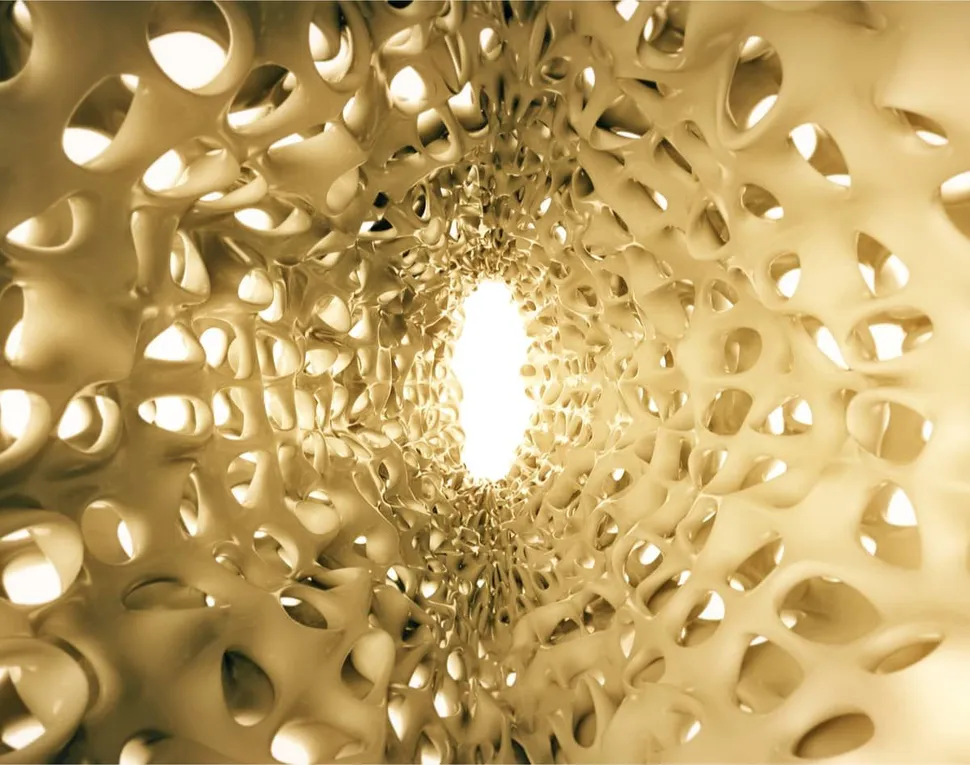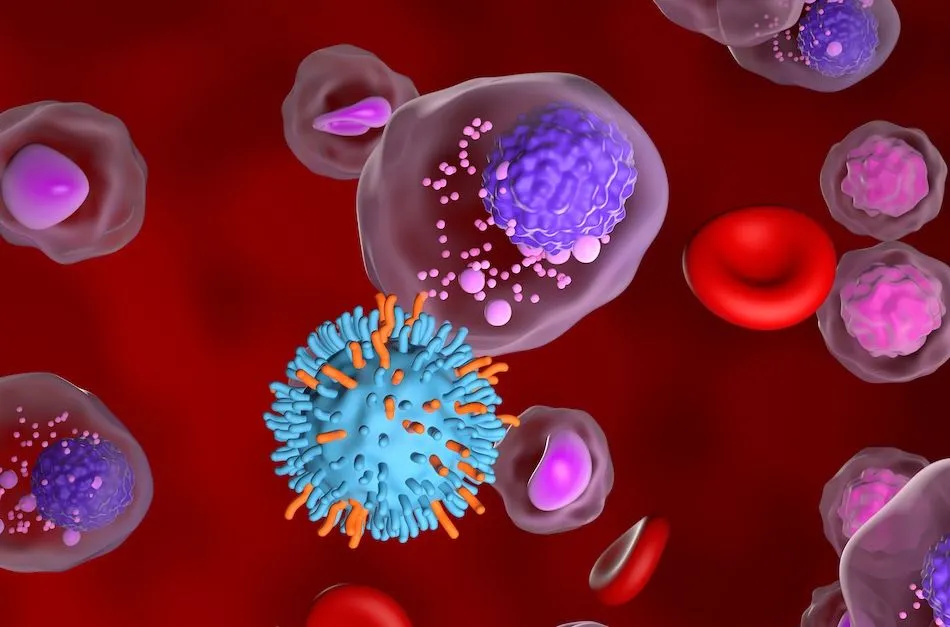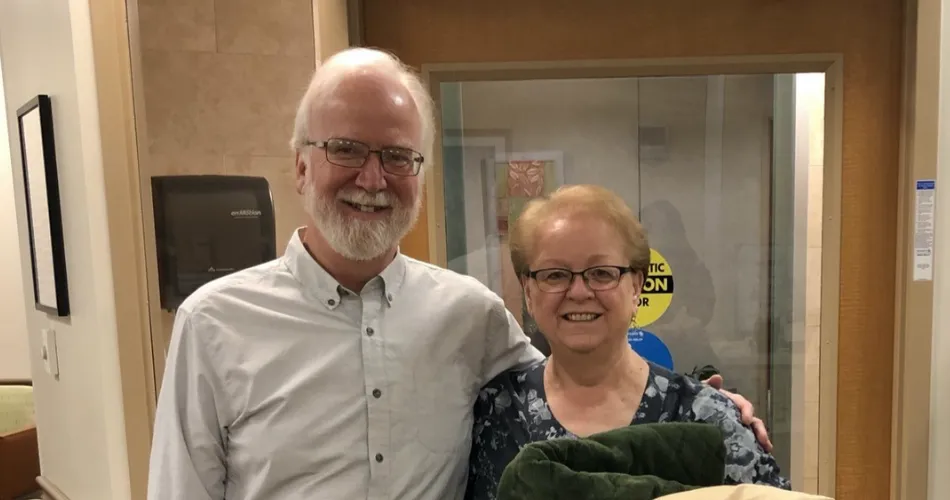MCRT Webcast: Making Sense of Myeloma Bone Issues

Bone pain is often the first symptom myeloma patients experience—often before they have been diagnosed—because bone degeneration is one of the most common effects of the disease. The bone strengthening class of drugs, bisphosphonates, was pioneered in myeloma treatment and is now of the most prescribed drug therapies for all cancer patients. Eliminating and lessening the potential of fractures and pain is an essential goal of treatment. Additionally, new therapies including genetically-targeted medicines are now being integrated into patient care.
Drs. Morie Gertz and Noopur Raje explain what patients need to understand about bone disease management and treatment in the Myeloma Crowd Round Table Interactive Webcast on October 10, 2020:
Morie Gertz, MD, Mayo Clinic, Rochester, MN: Impact of Myeloma on Bone Health
- Bone is made up of cortical bone and marrow, which is the blood-producing organ
- Plasma cells of the marrow that become malignant are myeloma cells, which can do two things:
- Leave the marrow to create plasmacytomas that replace cortical bone and soften it, their color on x-rays give them the misnomer of “holes in the bone,” which are actually lytic lesions
- Myeloma cells produce chemicals that “leech” calcium out of the bone, accelerating a natural process of aging
- Back and rib pain due to myeloma is commonly misdiagnosed
- Can lead to compression fractures in the vertebrae causing “exquisite” pain
- Activities of daily living can exacerbate pain
- Can be mitigated with proper diagnosis, frequency of events has declined sharply
- Issues to consider for spinal pain
- Vertrebroplasty or Kyphoplasty can help to alleviate pain control from spinal fractures that do not respond to medication
- Pain is not due to myeloma, but the fractures it causes
- Spinal radiation does control pain.
- Reconstructive spinal surgery generally not needed
- Radiation therapy is very localized
- From Dr. Raje’s presentation below: Radiation can affect stem cells, which are essential to treat myeloma, possibly by transplant, minimize use
- Treating physicians rely on effective therapy of myeloma and the three approved medications to reduce bone resorption to allow for strengthening of bone
- Effective therapy does not heal lytic lesions
- They create scar tissue, with is stronger than myeloma caused lesions, which does have a benefit
- Number of skeletal events decline dramatically with effective treatment
Noopur Raje, MD, Massachusetts General Hospital, Boston, MA: New Approaches to Myeloma Bone Disease
- Bone disease is a dynamic process with the interaction of two cell types, which when acting in balance, maintain good bone health
- Osteoclasts cause bone destruction
- Osteoblasts regenerate new bone
- Myeloma cause osteoclasts to accelerate and inhibit osteoblasts
- Myeloma can “migrate” and cause lytic bone disease in different parts of the skeleton
- X-rays generally see damage after it occurs
- Whole body low dose CT, FDG-PET and MRI are more effective [for a full discussion please see the Myeloma Crowd Round Table webcast on myeloma imaging]
- Make sure your physician is familiar with the IMWG recommendations on imaging [also discussed in link above]
- Bisphosphonates are an approved class of drugs to strengthen bones and reduce bone disease
- Zoledronic acid (Zometa ®)
- Pamidronate (Aredia ®)
- Clodronate (various trade names)
- Whether one has bone involvement or not, myeloma patients getting active treatment should be treated with a bone-targeting agent
- Has shown to reduce new osteolytic disease
- Side effects have been demonstrated if treatment for bone disease is too long
- Osteonecrosis of the jaw (ONJ): get regular tooth cleaning, have dental checkup before starting treatment
- Stress fractures
- Biomarker studies have shown reduction of treatment has benefits to avoid side effects-
- Denosumab (XGEVA ® or Prolia ®) is a new drug treatment option for bone disease
- RANK ligands (RANKL) is a protein over-expressed in myeloma
- Studies comparing it to zoledronic acid have been found to be equally effective and controls disease a bit better
- Both treatments are recommended IMWG guidelines [for more information please see the Myeloma Crowd Round Table webcast on myeloma imaging]
- Denosumab must be stopped gradually
- Research into healing lytic lesions with help of the bone microenvironment are ongoing
- Phase 1 trial: ACE-011, a human fusion protein, in combination with standard myeloma therapy demonstrates resolution of bone lesions without bone medications
- Drugs treating the protein sclerostin may also promote bone healing
Audience Questions & Answers
- 0:19 - Why should denosumab not be stopped abruptly?
- 2:08 - Is there a relationship between trisomy 21 and bone disease? More broadly, please address the genetics of myeloma bone disease.
- 5:38 - Why do MGUS and smoldering myeloma (SMM) patients experience bone pain if they do not have active myeloma?
- 7:40 - If one did not have bone damage at diagnosis, had control of myeloma for five years before relapse, how should one look at the issue of bone disease?
- 9:40 - Do any of the new osteoporosis drugs interfere with the immune system? Do they interfere with myeloma therapy?
- 11:36 - What should one do when ONJ occurs? Since patients cannot get major dental treatment when on bone strengthening drugs, can one stop treatment, get dental care, and then restart treatment? If yes, for how long should that pause be?
- 14:03 - Can anything be done for bone damage in the sternum?
- 15:35 - Does weight-bearing exercise help with bone health? What exercises are helpful? Hurtful?
- 19:45 - Does Zometa ® have anti-myeloma activity? How long should people be on bisphosphonates?
- 23:21 - Why are patients not routinely monitored with bone reabsorption markers?
- 25:22 - What quantities of calcium and vitamin D do you recommend?
- 28:00 - Are there types of nutrition or supplements that help improve bone health? [Dr. Gertz also addresses some health consequences of prolonged use of dexamethasone that small numbers of patients experience.]
- 30:43 - What are your thoughts on romosozumab?
- 31:20 - How do you determine whether osteopenia in a smoldering myeloma patient is osteoporosis/age related or caused by the myeloma clone?
- 33:19 - What are the most effective therapies for extramedullary disease? Do bone strengtheners help?
- 35:00 - When should one have a lesion irradiated? When should one not?
- 36:35 - How should one deal with rib pain?
- 37:52 - Is there a role for dexa scans?
- 40:12 - Are there other medications one can move to if one develops ONJ?
- 44:07 - Other agents stimulate osteoblast activity, why are these not being used in myeloma treatment?
- 45:20 - Although lytic lesions do not heal, is it possible that they stop showing up on imaging techniques?
- 47:25 - Do you have general recommendations about twisting and turning while exercising?
- 49:29 - How does one assess the need for continued use of opioids and other pain mitigating drugs?
- 53:20 - Should bone strengtheners be used during maintenance?
- 54:55 - Prolia ® and XGEVA ® are different trade names for denosumab.
Thanks to our Round Table sponsors
 .
.  .
. 
 .
. 
 .
.  .
. 



Bone pain is often the first symptom myeloma patients experience—often before they have been diagnosed—because bone degeneration is one of the most common effects of the disease. The bone strengthening class of drugs, bisphosphonates, was pioneered in myeloma treatment and is now of the most prescribed drug therapies for all cancer patients. Eliminating and lessening the potential of fractures and pain is an essential goal of treatment. Additionally, new therapies including genetically-targeted medicines are now being integrated into patient care.
Drs. Morie Gertz and Noopur Raje explain what patients need to understand about bone disease management and treatment in the Myeloma Crowd Round Table Interactive Webcast on October 10, 2020:
Morie Gertz, MD, Mayo Clinic, Rochester, MN: Impact of Myeloma on Bone Health
- Bone is made up of cortical bone and marrow, which is the blood-producing organ
- Plasma cells of the marrow that become malignant are myeloma cells, which can do two things:
- Leave the marrow to create plasmacytomas that replace cortical bone and soften it, their color on x-rays give them the misnomer of “holes in the bone,” which are actually lytic lesions
- Myeloma cells produce chemicals that “leech” calcium out of the bone, accelerating a natural process of aging
- Back and rib pain due to myeloma is commonly misdiagnosed
- Can lead to compression fractures in the vertebrae causing “exquisite” pain
- Activities of daily living can exacerbate pain
- Can be mitigated with proper diagnosis, frequency of events has declined sharply
- Issues to consider for spinal pain
- Vertrebroplasty or Kyphoplasty can help to alleviate pain control from spinal fractures that do not respond to medication
- Pain is not due to myeloma, but the fractures it causes
- Spinal radiation does control pain.
- Reconstructive spinal surgery generally not needed
- Radiation therapy is very localized
- From Dr. Raje’s presentation below: Radiation can affect stem cells, which are essential to treat myeloma, possibly by transplant, minimize use
- Treating physicians rely on effective therapy of myeloma and the three approved medications to reduce bone resorption to allow for strengthening of bone
- Effective therapy does not heal lytic lesions
- They create scar tissue, with is stronger than myeloma caused lesions, which does have a benefit
- Number of skeletal events decline dramatically with effective treatment
Noopur Raje, MD, Massachusetts General Hospital, Boston, MA: New Approaches to Myeloma Bone Disease
- Bone disease is a dynamic process with the interaction of two cell types, which when acting in balance, maintain good bone health
- Osteoclasts cause bone destruction
- Osteoblasts regenerate new bone
- Myeloma cause osteoclasts to accelerate and inhibit osteoblasts
- Myeloma can “migrate” and cause lytic bone disease in different parts of the skeleton
- X-rays generally see damage after it occurs
- Whole body low dose CT, FDG-PET and MRI are more effective [for a full discussion please see the Myeloma Crowd Round Table webcast on myeloma imaging]
- Make sure your physician is familiar with the IMWG recommendations on imaging [also discussed in link above]
- Bisphosphonates are an approved class of drugs to strengthen bones and reduce bone disease
- Zoledronic acid (Zometa ®)
- Pamidronate (Aredia ®)
- Clodronate (various trade names)
- Whether one has bone involvement or not, myeloma patients getting active treatment should be treated with a bone-targeting agent
- Has shown to reduce new osteolytic disease
- Side effects have been demonstrated if treatment for bone disease is too long
- Osteonecrosis of the jaw (ONJ): get regular tooth cleaning, have dental checkup before starting treatment
- Stress fractures
- Biomarker studies have shown reduction of treatment has benefits to avoid side effects-
- Denosumab (XGEVA ® or Prolia ®) is a new drug treatment option for bone disease
- RANK ligands (RANKL) is a protein over-expressed in myeloma
- Studies comparing it to zoledronic acid have been found to be equally effective and controls disease a bit better
- Both treatments are recommended IMWG guidelines [for more information please see the Myeloma Crowd Round Table webcast on myeloma imaging]
- Denosumab must be stopped gradually
- Research into healing lytic lesions with help of the bone microenvironment are ongoing
- Phase 1 trial: ACE-011, a human fusion protein, in combination with standard myeloma therapy demonstrates resolution of bone lesions without bone medications
- Drugs treating the protein sclerostin may also promote bone healing
Audience Questions & Answers
- 0:19 - Why should denosumab not be stopped abruptly?
- 2:08 - Is there a relationship between trisomy 21 and bone disease? More broadly, please address the genetics of myeloma bone disease.
- 5:38 - Why do MGUS and smoldering myeloma (SMM) patients experience bone pain if they do not have active myeloma?
- 7:40 - If one did not have bone damage at diagnosis, had control of myeloma for five years before relapse, how should one look at the issue of bone disease?
- 9:40 - Do any of the new osteoporosis drugs interfere with the immune system? Do they interfere with myeloma therapy?
- 11:36 - What should one do when ONJ occurs? Since patients cannot get major dental treatment when on bone strengthening drugs, can one stop treatment, get dental care, and then restart treatment? If yes, for how long should that pause be?
- 14:03 - Can anything be done for bone damage in the sternum?
- 15:35 - Does weight-bearing exercise help with bone health? What exercises are helpful? Hurtful?
- 19:45 - Does Zometa ® have anti-myeloma activity? How long should people be on bisphosphonates?
- 23:21 - Why are patients not routinely monitored with bone reabsorption markers?
- 25:22 - What quantities of calcium and vitamin D do you recommend?
- 28:00 - Are there types of nutrition or supplements that help improve bone health? [Dr. Gertz also addresses some health consequences of prolonged use of dexamethasone that small numbers of patients experience.]
- 30:43 - What are your thoughts on romosozumab?
- 31:20 - How do you determine whether osteopenia in a smoldering myeloma patient is osteoporosis/age related or caused by the myeloma clone?
- 33:19 - What are the most effective therapies for extramedullary disease? Do bone strengtheners help?
- 35:00 - When should one have a lesion irradiated? When should one not?
- 36:35 - How should one deal with rib pain?
- 37:52 - Is there a role for dexa scans?
- 40:12 - Are there other medications one can move to if one develops ONJ?
- 44:07 - Other agents stimulate osteoblast activity, why are these not being used in myeloma treatment?
- 45:20 - Although lytic lesions do not heal, is it possible that they stop showing up on imaging techniques?
- 47:25 - Do you have general recommendations about twisting and turning while exercising?
- 49:29 - How does one assess the need for continued use of opioids and other pain mitigating drugs?
- 53:20 - Should bone strengtheners be used during maintenance?
- 54:55 - Prolia ® and XGEVA ® are different trade names for denosumab.
Thanks to our Round Table sponsors
 .
.  .
. 
 .
. 
 .
.  .
. 




about the author
Greg Brozeit
Greg Brozeit has been with the HealthTree Foundation since 2015 when he began volunteering for the Myeloma Crowd. Prior to that he worked with Dr. Bart Barlogie and the International Myeloma Foundation, inaugurating many myeloma patient advocacy and education programs.
More on HealthTree Programs
Trending Articles




Get the Latest Multiple Myeloma Updates, Delivered to You.
By subscribing to the HealthTree newsletter, you'll receive the latest research, treatment updates, and expert insights to help you navigate your health.
Together we care.
Together we cure.
3x Faster.










